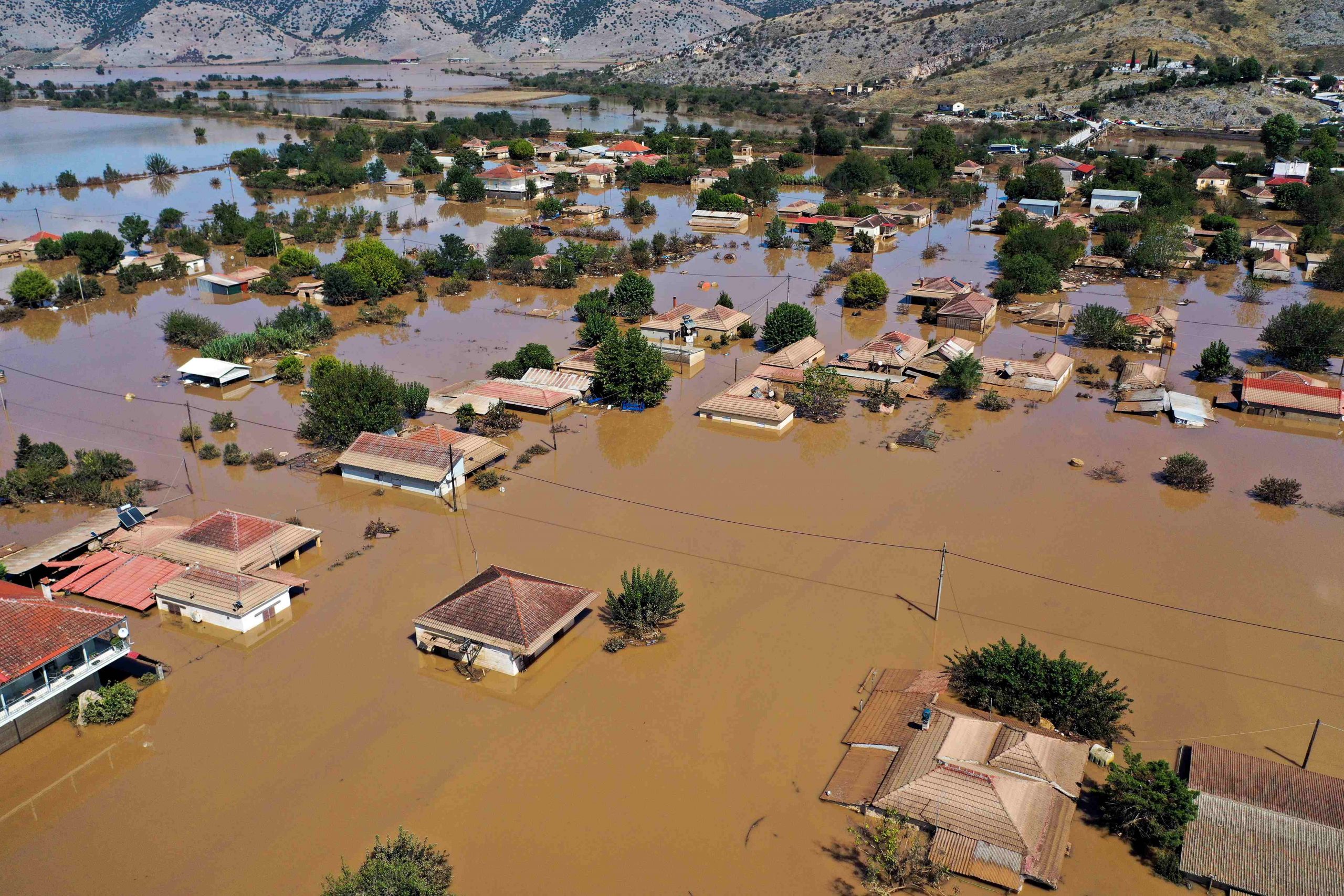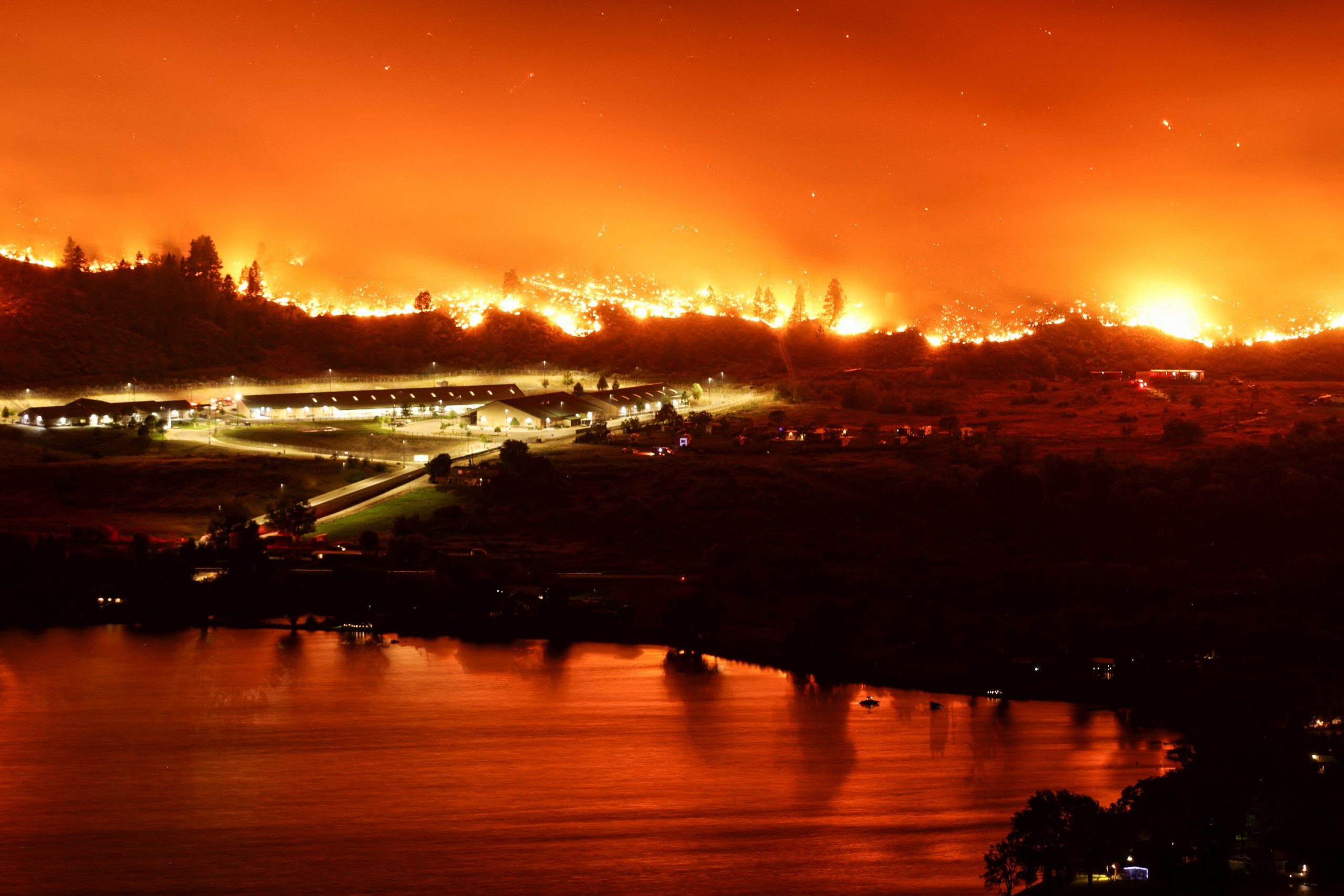The record global temperatures that spawned heavy rainfall, disastrous floods and raging wildfires in 2023 will likely continue in 2024.
The findings were reported Tuesday by the European Union’s Copernicus Climate Change Service in the first analysis to declare—after months of speculation—that 2023 was the hottest year since record-keeping began in the mid-1800s.
2023’s global average temperature, the study found, was 14.98 degrees Celsius, or 58.96 degrees Fahrenheit.
That average was 1.48 degrees C, or 2.66 degrees F, hotter than the preindustrial baseline, creeping ever closer to the 1.5 degrees C threshold the world’s nations have agreed to keep warming below to avoid the worst effects of climate change.
“The extremes we have observed over the last few months provide a dramatic testimony of how far we now are from the climate in which our civilization developed,” said Carlo Buontempo, director of the Copernicus service.
The record temperatures were caused by rising greenhouse gas emissions and by the ocean releasing heat to the atmosphere for the past three years during the La Niña ocean circulation pattern, according to the Copernicus report.
“We had the suppression for three years in a row,” said Sarah Kapnick, NOAA’s chief scientist. “And then suddenly all this heat was released through these marine heat waves around the world.”
Not every storm or heat wave is caused by climate change, and not every city, state or country hit record temperatures in 2023. However, climate scientists say that rising global temperatures increase the likelihood of moreperiods of heavy rainfall, more heat waves more droughts and more wildfires.
The Copernicus report found that each month from June to December in 2023 was warmer than the same month in any previous year. It is likely that a 12-month period ending in January or February 2024 will exceed 1.5 degrees C above the preindustrial levels, according to the report.
As the temperatures rose, wildfires fueled by heat and drought drove thousands of people from their homes and spewed harmful smoke hundreds of miles from the flames.
In August, dry weather and strong winds from Hurricane Dora fueled the deadliest U.S. fire in over a century, killing 100 people and destroying much of the historic town of Lahaina on the Hawaiian island of Maui.
In Canada, wildfires scorched more than 45 million acres from May to October, above the previous record of 17.5 million acres, according to Canadian government figures. A total of 240,000 residents from nearly 300 communities were evacuated during the wildfire season.
“The warmer the atmosphere, the more efficient the atmosphere is in sucking the moisture out of dead vegetation on the forest floor,” said Michael Flannigan, professor of wildland fire at Thompson Rivers University in British Columbia. “The drier the fuel, the easier it is for a fire to start and spread, leading to higher intensity fires that are difficult to impossible to extinguish.”
Smoke from Canada’s wildfires drifted south across the Northeastern U.S. and Midwest this past summer, and tiny particles of soot that are 2.5 microns or less in width, known as PM2.5, posed a health threat to millions of residents, especially vulnerable populations such as the elderly, young and those with underlying health conditions.
Extreme heat fueled fires in northern and central Greece, killing at least 21 people, and burning 312 square miles in late August and early September, the biggest wildfire this century in Europe.
In Chile, hot dry weather and strong winds caused wildfires that killed 26 people and injured more than 1,000. More than 741,000 acres were burned, according to NOAA.
Powerful rain events also created havoc across many parts of the globe.
A warmer atmosphere holds more water vapor, seeding stronger rain storms, according to Jonathan M. Winter, associate professor of geography at Dartmouth College.
“We have a warmer ocean, so that can give storms more fuel, more water vapor and more liquid to work with” as the ocean water evaporates into the atmosphere, Winter said.
Between Dec. 26, 2022, and Jan. 17, 2023, San Francisco received 17.6 inches of rain, while nearby Oakland set a 23-day rainfall record with 18.3 inches of rain. The storms destroyed homes and businesses and cost the lives of 17 people across California, according to a Jan. 11 statement by Gov. Gavin Newsom.
Moody’s RMS, a catastrophe risk management and modeling firm, estimated the California storms and resulting floods in January 2023 caused $5 billionto$7 billion in damage to the U.S. economy.
On April 12, Fort Lauderdale, Fla., was drenched with 25 inches of rain, flooding streets and homes and closing the city’s airport.
In mid-July, catastrophic flooding occurred across much of Vermont, washing out roads and bridges, putting the capital of Montpelier under several feet of water and damaging thousands of homes and businesses, according to NOAA. The highest 48-hour rainfall total was 9.20 inches in Calais, Vt.
In September, Storm Daniel swept through Greece, Bulgaria and Turkey before hitting northeastern Libya on Sept. 10 and 11. Al-Bayda, Libya, recorded 16.3 inches of rainfall in 24 hours, while resulting floods destroyed much of the city of Derna, made worse by the collapse of two dams. An estimated 4,300 were killed, according to the United Nations.

Flooded land in the village of Vlochos 7 days after the storm Daniel, in Karditsa, Greece on September 11, 2023/ Nick Paleologos, SOOC
On Dec. 18 and 19, parts of New England, including Maine, received as much as 8 inches of rain that caused severe flooding, damage and power outages along several rivers and killed five people across the Northeast.
If El Niño, the pattern that causes the eastern Pacific Ocean to warm, continues as expected, global atmospheric temperatures will likely remain well above normal in 2024, according to Kristopher Karnauskas, associate professor of atmospheric and oceanic sciences at the University of Colorado, Boulder.
Karnauskas noted that although planet-warming emissions of CO have declined slightly in the U.S. since 2008, they have risen globally for decades.
“There’s no reason to expect a slowdown of the warming in 2024,” Karnauskas said.
Write to Eric Niiler at eric.niiler@wsj.com



